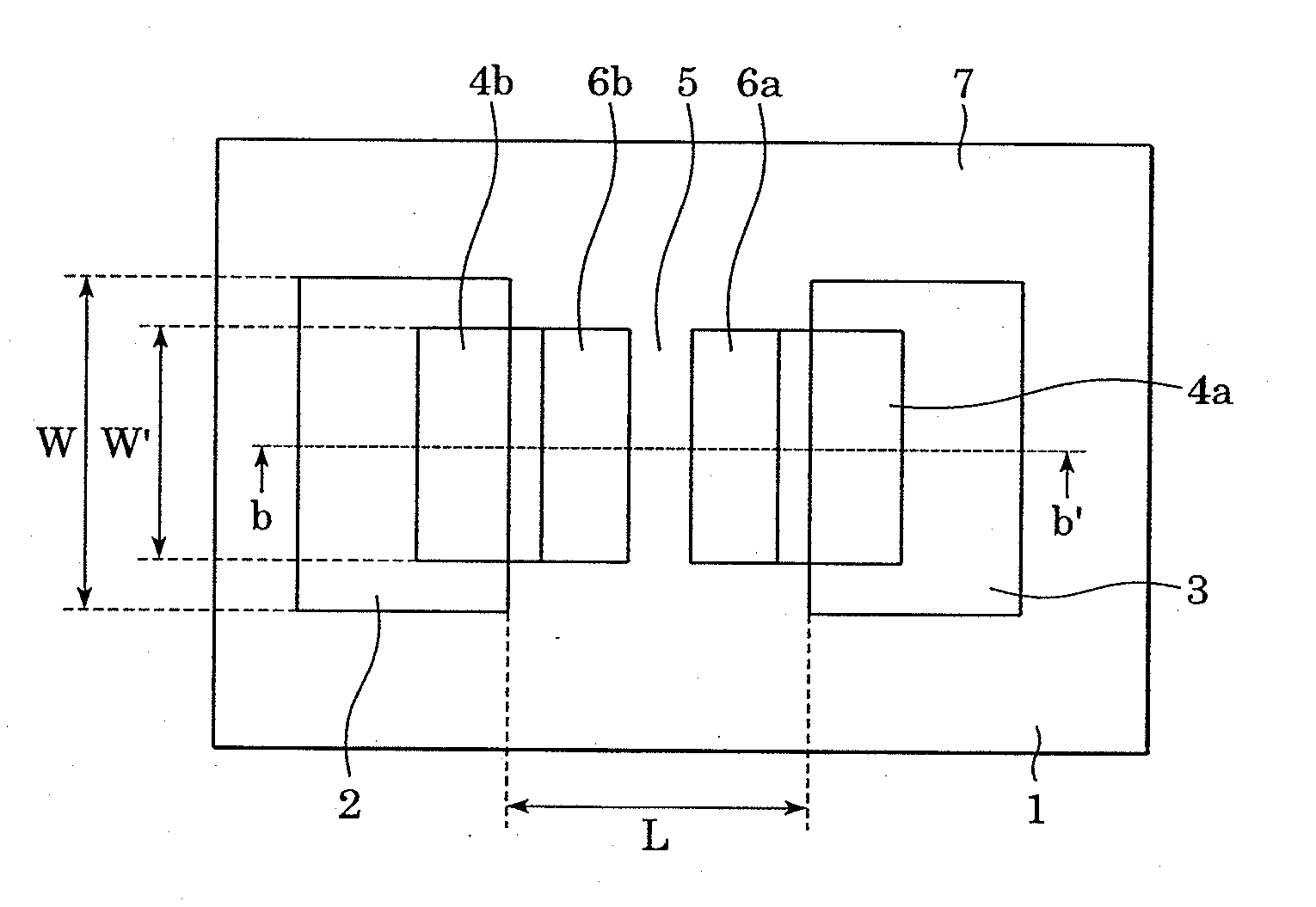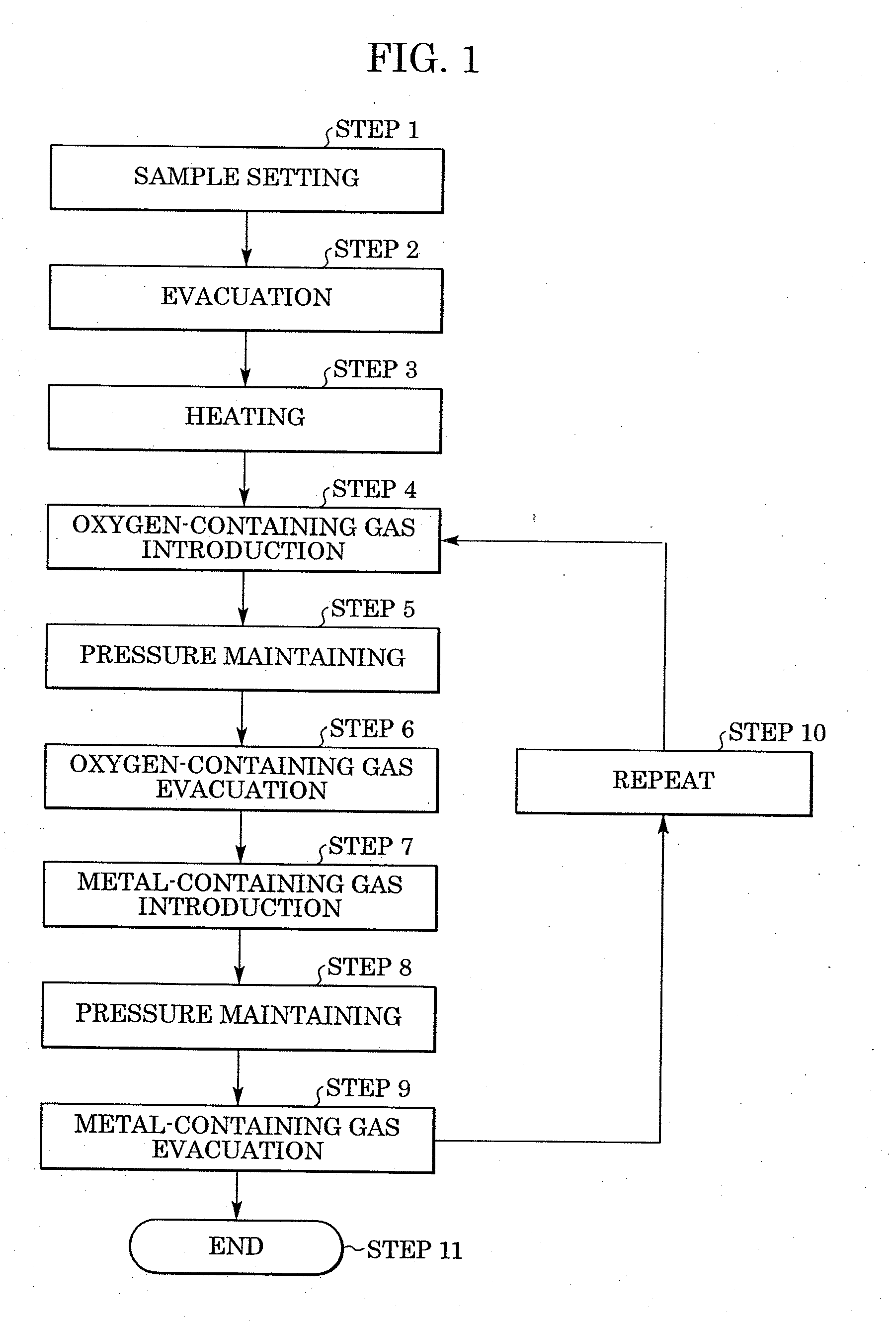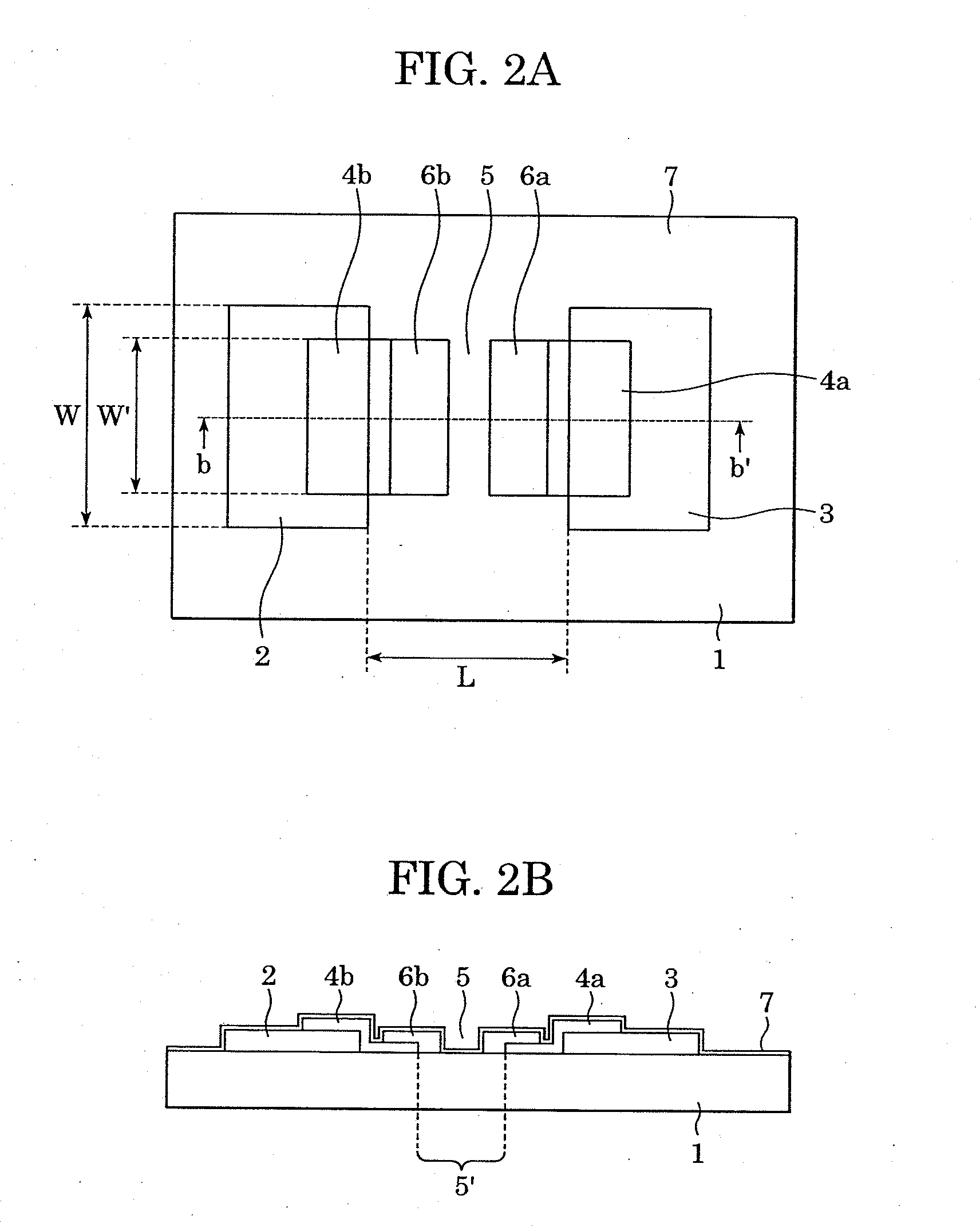Method for manufacturing electron-emitting device, methods for manufacturing electron source and image display device using the electron-emitting device, and information displaying reproducing apparatus using the image display device
a technology of electron emission and image display, which is applied in the manufacture of electrode systems, electric discharge tubes/lamps, and discharge tubes luminescent screens, etc., can solve the problems that the image display device using the conventional electron emission device cannot necessarily operate stably, does not necessarily exhibit satisfactory stable electron emission characteristics or satisfactory electron emission efficiency, and cannot meet the requirements of stable electron emission characteristics. , to achieve the effect of improving the electron emission efficiency of the electron emission device, stabilizing the electron emission characteristics, and brighter images
- Summary
- Abstract
- Description
- Claims
- Application Information
AI Technical Summary
Benefits of technology
Problems solved by technology
Method used
Image
Examples
example 1
[0132]The electron-emitting device produced in Example 1 has the same structure as in FIGS. 2A and 2B. The process for manufacturing the electron-emitting device of the present example will be described with reference to FIGS. 2A, 2B, and 6A to 6E.
[0133]Step a: A silicon oxide layer was deposited to a thickness of 0.5 μm on a cleaned soda lime glass by sputtering. The resulting composite was used as the substrate 1. A host resist pattern was formed on the substrate 1, and subsequently a 5 nm thick Ti layer and a 100 nm thick Ni layer were deposited in that order by vacuum deposition. Then, the host resist pattern was dissolved in an organic solvent to form electrodes 2 and 3 by lift-off of the Ni and Ti deposition layers (FIG. 6A). The electrodes 2 and 3 had an interval L of 3 μm therebetween, and a width W of 300 μm.
[0134]Step b: A Cr mask was formed for forming a conductive film 4. Specifically, a 100 nm thick Cr layer was deposited on the substrate 1 having the electrode 2 and 3 ...
example 2
[0143]In Example 2, the carbon-containing gas tolunitrile used for the “activation” process in Example 1 was replaced with Hf[N(CH3)2]4 (tetrakis(dimethylamino)hafnium) gas. The partial pressure of the tetrakis(dimethylamino)hafnium gas was set at 1×10−4 Pa for the “activation” process.
[0144]The characteristics of the electron-emitting device after the “activation” process were examined. As a result, the electron-emitting device of the present example exhibited the same characteristics as those of the device produced by Steps a to e without Step f, but the emission current and electron emission efficiency were not increased, unlike the electron-emitting device of Example 1.
[0145]Then, after the “activation” process using tetrakis(dimethylamino)hafnium gas, the sequence of the following Steps A and B was repeated 50 cycles with the temperature of the substrate 1 maintained at 85° C.
[0146]Step A: H2O gas was introduced into the vacuum chamber until the pressure was increased to 3000 P...
example 3
[0150]In Example 3, the tetrakis(dimethylamino)hafnium used in Example 1 was replaced with Ti[N(CH3)2]4 (tetrakis(dimethylamino)titanium) and an electron-emitting device was produced. The characteristics of the resulting electron-emitting device were evaluated.
[0151]In the production process of the electron-emitting device in the present example, Steps a to e were performed in the same manner as in Example 1. Then, Step f was performed by repeating the sequence of the following Step A and Step B 100 cycles with the temperature of the substrate 1 maintained at 85° C.
[0152]Step A: H2O gas was introduced into the vacuum chamber until the pressure was increased to 1000 Pa, and the pressure was maintained for 10 seconds. Subsequently, the vacuum chamber was evacuated to a pressure of about 10 Pa.
[0153]Step B: Ti[N(CH3)2]4 (tetrakis(dimethylamino)titanium) gas was introduced into the vacuum chamber until the pressure was increased to 1000 Pa, and the pressure was maintained for 10 seconds...
PUM
 Login to View More
Login to View More Abstract
Description
Claims
Application Information
 Login to View More
Login to View More - R&D
- Intellectual Property
- Life Sciences
- Materials
- Tech Scout
- Unparalleled Data Quality
- Higher Quality Content
- 60% Fewer Hallucinations
Browse by: Latest US Patents, China's latest patents, Technical Efficacy Thesaurus, Application Domain, Technology Topic, Popular Technical Reports.
© 2025 PatSnap. All rights reserved.Legal|Privacy policy|Modern Slavery Act Transparency Statement|Sitemap|About US| Contact US: help@patsnap.com



